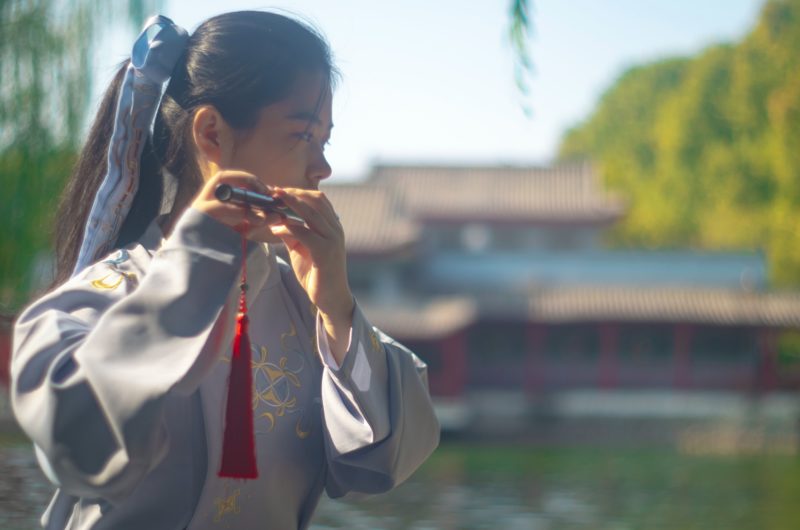
Chinese characters are the medium through which the Chinese language is recorded. They are an expression of communication; both in how the character is pronounced and the meaning the character represents…
So what is the history of Chinese characters?
The earliest Chinese characters were created using pictures or pictographs, which were originally inscribed on bone and then later on bronze and other metals. These characters eventually developed into the calligraphic style that we see today; this style has also been altered through the ages from the crude, unformulated style of the Jiǎgǔ zì 甲骨字 【甲骨字】 to the modern day ‘diamond-shape’ characters.
Here is a brief timeline of the development of these characters:
Earliest Chinese characters…
As Chinese characters have been evolving over thousands of years, it is currently still difficult for historians come to an accurate conclusion about their origin. According to the analysis of historical data, Chinese characters can be traced back to around five or six thousand years ago. In a Banpo Neolithic Yangshao culture archeological site – east of Xi’an in Shaanxi Province, China – there have been discoveries of characters that have been carved onto pottery.
甲骨字 【甲骨字】 Jiǎgǔ zì
Today, within modern Chinese characters, we can still see characteristics from the ancient Shang Dynasty, more than three thousand years ago. These ancient characters were originally inscribed onto tortoise shell or animal bones, which are also known as ‘oracle-bones’.
金字 【金字】 Jīnzì
During the Bronze Age, towards the end of the Shang Dynasty, characters began to be carved or casted onto bronze. These were called Jinzi ‘metal characters’. Their shaped and structure were similar to that of the Jiaguzi, however, as the use of molds became more popular, the characters themselves became more structured and thicker.
篆书 【篆書】 Zhuànshū
Zhuanshu eventually became the more standardised script, and brought about the elongation of the characters. The Dazhuan 大篆 【大篆】 style was first created during the late Western Zhou Dynasty (1045-771BC) and can be directly traced to the Jinzi style.
After, the unification of China under the first emperor, Qin Shihuang 秦始皇 【秦始皇】 (259-210 BC), the policy of formalising the character system saw the introduction of Xiaozhuan 小篆 【小篆】. Dazhuan and Xiaozhuan were both simplified forms of characters, and their joint features included: a proportioned amount of brush strokes and a finalised design.
Unlike the Jiaguzi and Jinzi, they had less variant forms and instead became the established ‘diamond-shape’ characters that form the basis of modern day script.
隶书【隸書】Lìshū
Lishu characters are respectively split into the Qín 秦 【秦】style (one of the Warring States into which China was divided during the Eastern Zhou period – 770-256 BC), and the Hàn 汉 【漢】 Dynasty style (206 BC – AD 220).
The Qin style of lishu was a hasty and often illegible style of writing that was predominantly used among the people as a non-governmental handwritten form of communication. The characters that local authorities used were known as Tú lì 徒隶 【徒隸】, and were adopted from the style of the common-folk and adapted to become the official governmental script.
During the change from the Xiaozhuan to the Lishu form of writing, the most profound modification was the symbolisation of the characters, which no longer followed the previous method of directly representing material objects.
楷书【楷書】Kǎishū
Kaishu came into being towards the end of the Han Dynasty, and was prominent during the Wei, Jin and North-South dynasties (AD 220-589). The artistry of Lishu style was often too complicated and therefore hard to read; similarly, though the Cǎoshū 草书 【草書】 style was slightly simpler, it was also difficult to distinguish the characters.
As a result, the Kaishu style of writing was developed in order to be easier to read and more distinguishable, and thus grew into the dominant position as the recognised structure of official characters.
Nowadays…
Nowadays, the standard simplified character system – which takes its main features from the Kaishu style – has been in official use in the mainland since the 1950s, and is taught as the main written language throughout China.
Traditional characters however – which is also a product of the Kaishu style – are still dominant in areas such as Hong Kong and Taiwan, and don’t follow the Romanized system of pinyin.
Why not read our tips for how to learn to write Chinese characters?
















